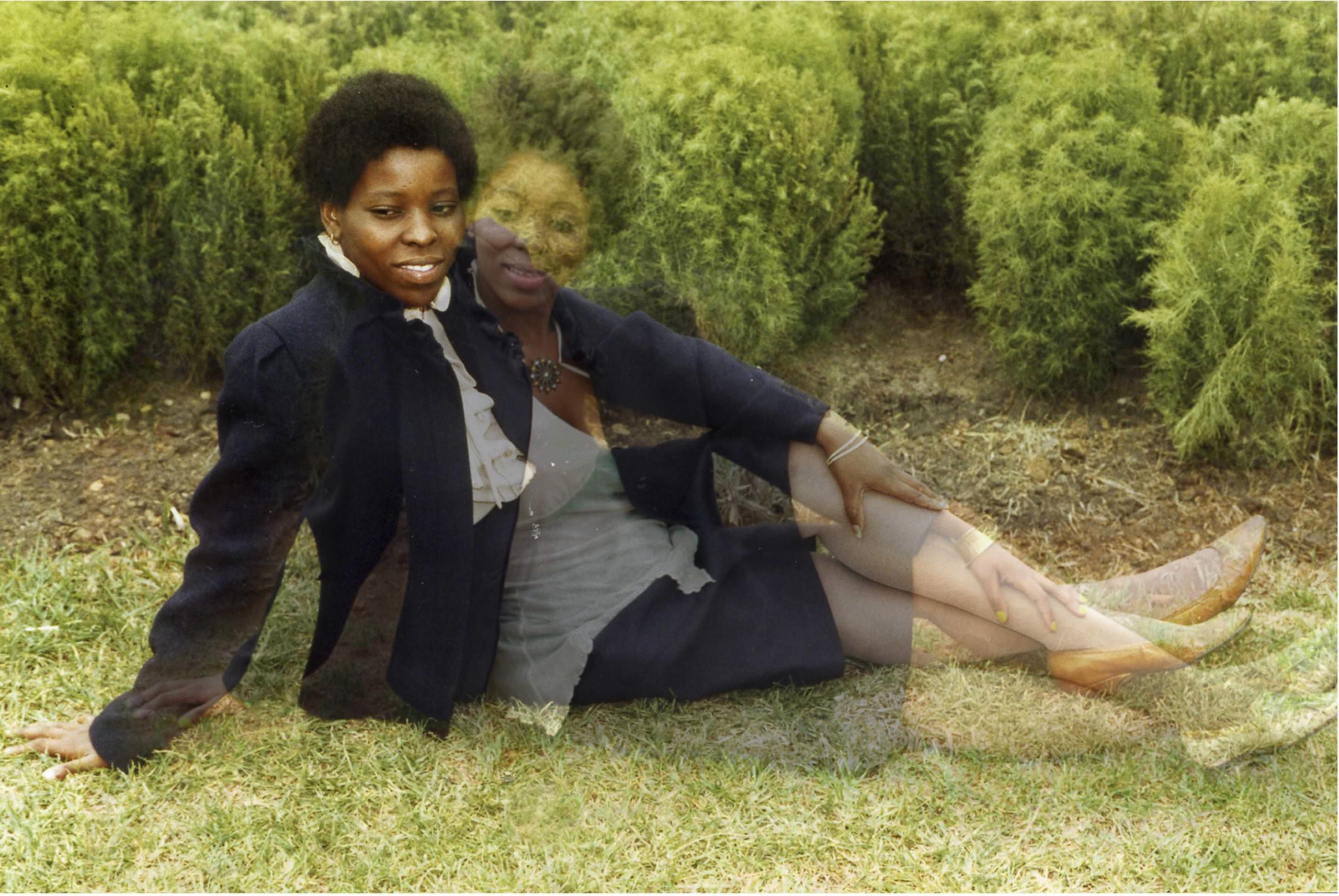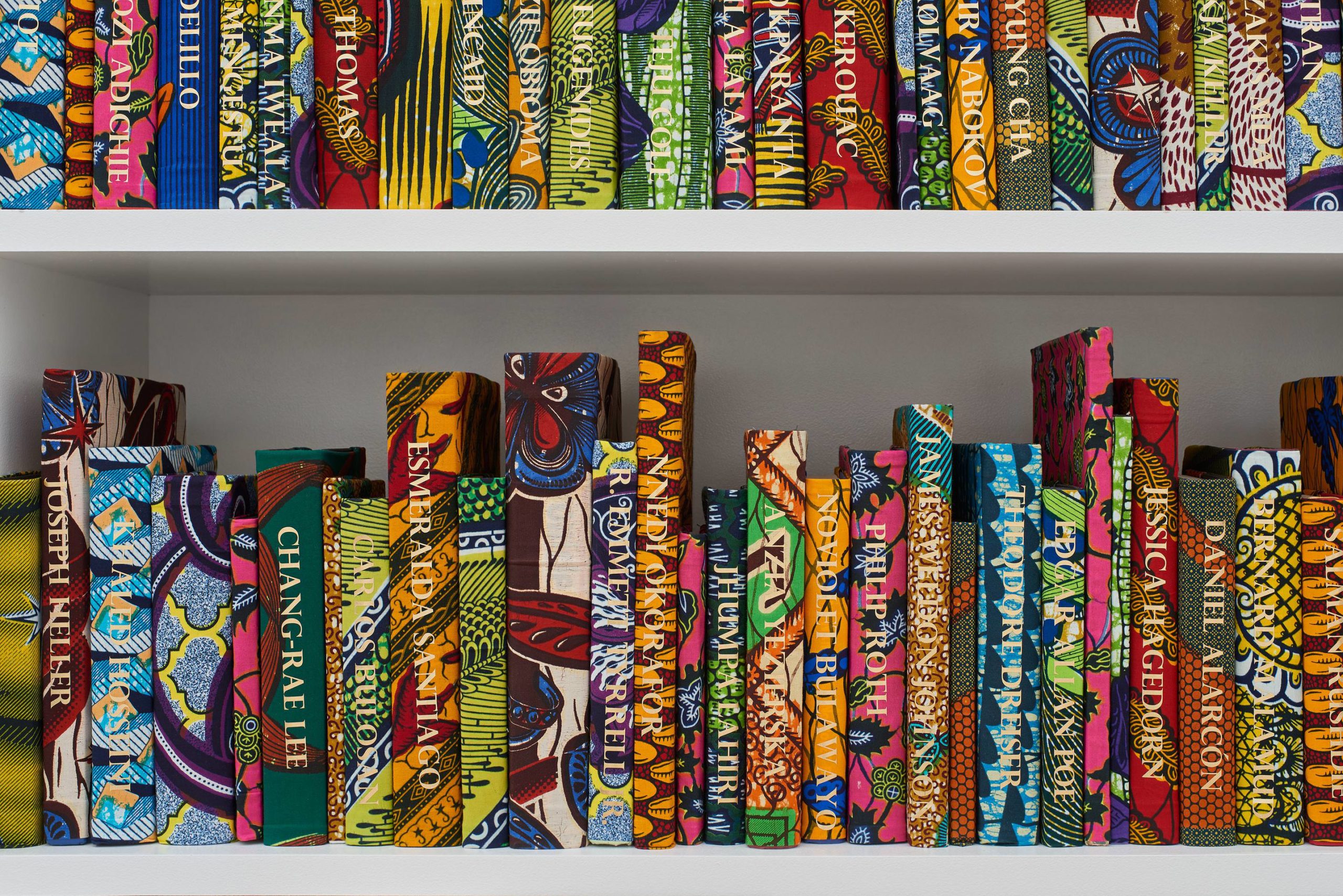The 28-year-old South African artist Lebohang Kganye lives and works in Johannesburg, where her creative practice exists between installation and performance. She creates and re-creates sets and scenes with sculpted paper and image cutouts, layered photos and animation. With these works, Kganye’s new and reimagined scenarios come to life to form complex narratives about family and community. Whitewall spoke with the artist about her love of photography and about both real and imagined storylines that guide her work.
WHITEWALL: In your work, we noticed an array of photo-manipulation techniques, including what appeared to be collage, image overlay, and more. Can you tell us a bit about where your creative process starts?
LEBOHANG KGANYE: Eight years ago, I lost my mother, who was my main link to our extended family and past. The idea of “the ghost” started to emerge in my work. I began looking for pieces of my mother in the house. I found many photos and clothes which had always been there but which I had ignored over the years. There she was smiling and posing in these clothes. My reconnection with her became a visual manipulation of “her-our” histories. I began inserting myself into her pictorial narrative by emulating these snaps of her from my family album. I would dress in the exact clothes that she was wearing in these thirty-year-old photographs and mimic the same poses. This was my way of marrying the two memories—mine and of my mother.
I later developed digital photomontages where I juxtaposed old photographs of my mother retrieved from the family archives with photographs of a present version of her (me) to reconstruct a new story and a commonality—she is me, I am her. There remains in this commonality so much difference, and so much distance in space and time. Photographs present us not just with the “thereness” of the object but the “having been there,” thus having the ability to present past, present, and future in a single image.
WW: Can you tell us about your latest series, “Reconstruction of a family”?
LK: My practice is evolving; I have been experimenting in animation and sculpture. In “Reconstruction of a family,” the viewer discovers human-scale scenery where characters are active in their daily newspapers. A big difference compared to my previous series on this same process is that the characters here are reversed—the background is white, the silhouettes are black. The characters no longer have faces. They become anonymous. This series is composed in a white box, with black silhouettes of characters from my family albums, exploring themes of memory, identity, and temporality, through the use of archival materials for the construction of cardboard cutouts of family photographs. The new series of silhouettes depicts a similar process of incorporating my family’s memories, my family’s recorded oral histories, and a collection of found family photographs.
WW: What is your relationship to technology in your work?
LK: I have an awkward relationship with technology. I spend and enjoy the physicality of cutting and the sense of touch and manipulation of material. I lose an element of the emotional connection with my artwork once it enters a digital space.
WW: Is there a medium or technique you haven’t explored yet, but hope to?
LK: I would love to explore puppetry and set and theater design.
I recently returned from a three-month studio residency in Geneva, which provided great inspiration and insight into that.
WW: Is there an idea you haven’t explored yet, but hope to?
LK: I have been contemplating a life-size installation of my cardboard cutouts that becomes animated through lights and shadows.
WW: What do you aim to express most with your photography?
LK: My photographic journey seems to be a deep response to loss and mourning—not just of different individuals, but of history, language, and oral culture. It is about memory, fantasy, identity formation, and performance, and provides a means for reconstructing my identity by reconnecting with family members (both alive and dead) and exposing a wider common history. Through the process of attempting to trace this history, I have discovered that identity cannot be made fully tangible just like the products of a camera; it is a site for the performance of dreams and the staging of narratives of contradiction and half-truths as well as those of erasure, denial, and hidden truths.
The more I researched my family history, it became apparent that identity remains a space of extreme contradictions—in a way, an experiment. It is a mixture of truth and fiction, a blending and clashing of histories and stories gathered, a malleable entity with the pretense of fixedness.








